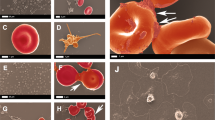Abstract.
Production of alpha-1-antitrypsin by human monocytes is an important factor in controlling tissue damage by proteases in the microenvironment of inflammation. Increases of four- to eightfold in levels of native and fragmented forms of alpha-1-antitrypsin have been detected in inflammatory loci in vivo. In this study we have extended our previous observation that the carboxyl-terminal peptide (C-36) of alpha-1-antitrypsin produced by specific proteinase cleavage, when added in its fibrillar form at concentrations of 5 µM or more to monocytes in culture, induces cytotoxic effects. Experiments with synthetic amyloid-forming peptides suggest fibril cytotoxicity to be mediated via a common oxidative stress mechanism. We undertook to determine whether C-36 fibril cytotoxicity also involves this common pathway. Monocytes stimulated with C-36 fibrils for 1 h showed significant elevation in monocyte chemoattractant protein-1 expression, induced reduced nicotinamide-adenine dinucleotide phosphate oxidase activity, increased intracellular lipid peroxidation, altered mitochondrial membrane potential, and increased cytosolic cytochrome c and caspase-3 activity. Treatment of monocytes with C-36 fibrils after 24 h also resulted in increased cytosolic cathepsin D activity, suggesting that lysosomes may also be destabilized over longer periods of time. In contrast, native alpha-1-antitrypsin only showed concentration and time-dependent effects on chemoattractant protein-1 expression, and these appear to be independent of oxidative stress. These results indicate that the cytotoxicity of the fibrillar fragment is mediated via oxidative mechanisms and support important multiple roles for native and also for cleaved forms of alpha-1-antitrypsin in monocyte recruitment and activation during inflammatory processes such as atherosclerosis.
Similar content being viewed by others
Author information
Authors and Affiliations
Additional information
Electronic Publication
Rights and permissions
About this article
Cite this article
Bironaite, D., Lindgren, S. & Janciauskiene, S. Fibrillogenic C-terminal fragment of alpha-1-antitrypsin activates human monocytes via oxidative mechanisms. Cell Tissue Res 305, 87–98 (2001). https://doi.org/10.1007/s004410000212
Received:
Accepted:
Published:
Issue Date:
DOI: https://doi.org/10.1007/s004410000212




